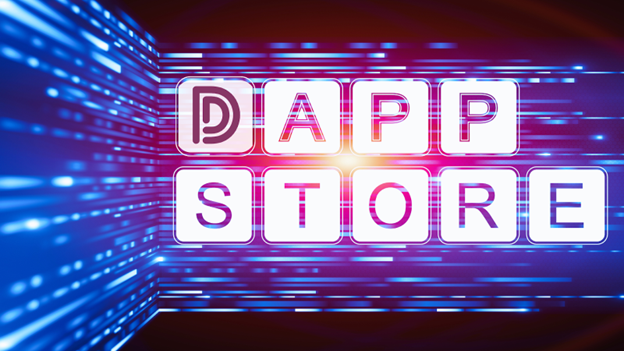0x12…qrst

So, Shiba Inu just flipped the switch on the Shibarium DappStore, right? Suddenly this term pops up, sounding suspiciously like the app store on your phone but shrouded in crypto mystique.
It arrives promising a gateway to decentralized apps on the Shiba Inu Layer 2, but what does that actually mean for users and devs? Is a DappStore just a fancy list, or is there more going on under the hood?
Time to unpack this essential, sometimes confusing, piece of the Web3 puzzle.
You whip out your phone, tap the App Store or Google Play icon, and boom – millions of apps at your fingertips. Games, banking, social media, that weird cat photo editor you downloaded once.
It’s slick, organized, and mostly works. Easy peasy.
Then you wander into Web3, hear about this new DappStore, and things get… foggier. Is it the same deal? Do you download crypto apps that magically appear on your phone?
Sort of, but not really. The term sounds familiar, but the reality involves blockchains, decentralization (sometimes), and a whole different set of rules. Let’s clear the air.
Before hitting the store, remember what we’re shopping for. “Dapp” stands for Decentralized Application.
Unlike your standard apps run by one company on their servers, dApps live on a blockchain (like Ethereum, Solana, or, y’know, Shibarium). They often use smart contracts – bits of code that automatically do stuff when certain conditions are met – and try to put more control in the hands of users, sometimes involving tokens for governance or utility.
Think decentralized finance tools (DeFi), NFT marketplaces, blockchain games, that kind of jazz.
Right, so a DappStore is basically a curated catalogue, a digital storefront, specifically designed to showcase and provide access to those dApps built for a particular blockchain ecosystem. Apple has its walled garden; Shibarium now has its own curated patch within its DappStore.
Why create these specific stores instead of just letting dApps run wild? Well, navigating the raw blockchain to find usable dApps can feel like trying to find a specific weapon drop in Diablo by randomly clicking through every monster on the map.
It’s chaotic. DappStores bring some much-needed order to the decentralized chaos:
Blockchains are permissionless. Anyone can deploy a smart contract or dApp.
That’s cool, but it also means the landscape gets cluttered fast with thousands of projects – some genius, some half-baked, some outright scams. Finding something specific and useful can be a nightmare.
Block explorers show you everything raw, which is overwhelming. A DappStore acts like a curated quest log or a filtered map – it points you toward applications the store runners (usually the core blockchain team) think are worth checking out on their specific network. It narrows the field dramatically.
A good DappStore becomes more than just a list; it acts like the central hub or town square for that blockchain’s ecosystem. It shows off what’s popular, what’s new, what the community is buzzing about.
It helps create a sense of place and shared activity. Seeing a bustling store gives users and developers confidence that things are actually happening on that chain.
It’s a sign of life, a focal point that helps build network effects – more users attract more devs, who then build more apps, thus attracting more users, and so on.
Imagine spending months coding the most amazing decentralized game ever, only to launch it into the void where nobody knows it exists. That’s the reality for many Web3 builders. Getting traction is tough.
A DappStore offers developers a direct line to the most interested audience possible: the people already using that specific blockchain. Getting listed means visibility, a chance to stand out from the noise, and access to potential users actively looking for things to do on that network.
It’s like getting your indie game featured on the Steam front page instead of buried on page 5,000.
Let’s be real: Web3 can be the Wild West. Rug pulls, buggy code, vampire contracts draining your wallet – it happens.
The DappStore model usually involves some level of curation. The team behind the store reviews applications before listing them.
Now, this isn’t a bulletproof guarantee – DYOR (Do Your Own Research) is still your mantra. But the idea is to filter out the most obvious scams and technically broken junk.
Think of it like a shopkeeper who at least tries to avoid selling exploding potions. It’s a layer of attempted quality control, offering a potentially safer starting point than clicking random links on Twitter. Shibarium, for example, makes devs apply via a form – that’s curation in action, a key function of the Shibarium DappStore.
Here’s the slightly awkward part. Web3 is all about decentralization, right?
Power to the people, no single point of control? Well… most DappStores are run and curated by the central project team behind the blockchain. They decide the listing criteria, they approve or reject applications, they control the front page.
It’s a practical compromise. A totally open, uncurated store would quickly become unusable, filled with spam and scams.
Curation makes it safer and easier to navigate. But it absolutely introduces a layer of centralization and potential bias.
It’s one of the many areas where the lofty ideals of Web3 bump up against the messy realities of user experience and safety when implementing something like a DappStore.
So, a DappStore isn’t just your phone’s app store ported to the blockchain. It’s a specialized catalogue for finding decentralized apps on a specific network like Shibarium.
It aims to make discovery easier, offer some level of safety through curation (buyer still beware!), act as a central hub for the ecosystem, and give developers a much-needed spotlight.
It’s a key piece of infrastructure for any blockchain trying to move beyond just having a token to having a living, breathing world of applications – even if it comes with a side of centralization irony. Now you know the deal with the DappStore concept.